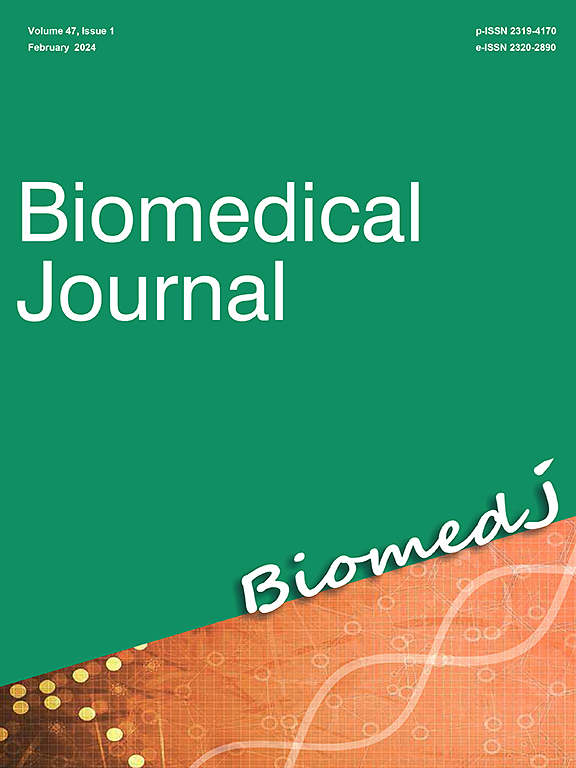IRE1α-mediated endoplasmic reticulum stress response regulates oxidative damage in CYP4V2 deficient human retinal pigment epithelial cells
IF 4.4
3区 医学
Q2 BIOCHEMISTRY & MOLECULAR BIOLOGY
引用次数: 0
Abstract
Background
Given the role of polyunsaturated fatty acid (PUFA) overload and mitochondrial dysfunction in retinal pigment epithelium (RPE) cells in causing retinal degeneration in Bietti crystalline dystrophy (BCD), we aimed to identify the pathways responsible for intracellular oxidative stress and mitochondrial damage in CYP4V2-deficient RPE cells.
Materials and methods
Proteomic analysis of control and CYP4V2-knockdown (KD) ARPE-19 cells revealed that endoplasmic reticulum (ER) stress was the most enriched pathway. The effects of CYP4V2 deficiency on intracellular reactive oxygen species, mitochondrial integrity, and ATP production were assessed.
Results
Inositol-requiring enzyme 1 α (IRE1α) inhibitors suppressed upregulation of endoplasmic reticulum oxidoreductase 1 alpha (ERO1-Lα) protein expression, which contributed to ER-associated oxidative stress. Loss of mitochondrial transmembrane potential and reduced ATP production were mitigated with IRE1α inhibitor in CYP4V2-KD ARPE-19 cells.
Conclusions
Our findings reveal a novel regulatory mechanism involving potential reduction in PUFA utilization, IRE1α signaling mediated ER oxidative stress, and mitochondrial dysfunction in BCD, potentially offering future therapeutic avenues.

ire1介导的内质网应激反应调节CYP4V2缺陷人视网膜色素上皮细胞的氧化损伤
背景:考虑到视网膜色素上皮(RPE)细胞中多不饱和脂肪酸(PUFA)过载和线粒体功能障碍在引起Bietti晶体营养不良(BCD)视网膜变性中的作用,我们旨在确定cyp4v2缺陷RPE细胞内氧化应激和线粒体损伤的途径。材料和方法:对照和cyp4v2敲低(KD)的ARPE-19细胞的蛋白质组学分析显示,内质网(ER)应激是最富集的途径。评估CYP4V2缺乏对细胞内活性氧、线粒体完整性和ATP产生的影响。结果:肌醇要求酶1α (IRE1α)抑制剂抑制内质网氧化还原酶1α (ERO1-Lα)蛋白表达上调,该蛋白参与内质网氧化应激。在CYP4V2-KD ARPE-19细胞中,IRE1α抑制剂可以减轻线粒体跨膜电位的丧失和ATP产生的减少。结论:我们的研究结果揭示了一种新的调节机制,涉及BCD中PUFA利用的潜在减少、IRE1α信号介导的内质网氧化应激和线粒体功能障碍,可能为未来的治疗提供途径。
本文章由计算机程序翻译,如有差异,请以英文原文为准。
求助全文
约1分钟内获得全文
求助全文
来源期刊

Biomedical Journal
Medicine-General Medicine
CiteScore
11.60
自引率
1.80%
发文量
128
审稿时长
42 days
期刊介绍:
Biomedical Journal publishes 6 peer-reviewed issues per year in all fields of clinical and biomedical sciences for an internationally diverse authorship. Unlike most open access journals, which are free to readers but not authors, Biomedical Journal does not charge for subscription, submission, processing or publication of manuscripts, nor for color reproduction of photographs.
Clinical studies, accounts of clinical trials, biomarker studies, and characterization of human pathogens are within the scope of the journal, as well as basic studies in model species such as Escherichia coli, Caenorhabditis elegans, Drosophila melanogaster, and Mus musculus revealing the function of molecules, cells, and tissues relevant for human health. However, articles on other species can be published if they contribute to our understanding of basic mechanisms of biology.
A highly-cited international editorial board assures timely publication of manuscripts. Reviews on recent progress in biomedical sciences are commissioned by the editors.
 求助内容:
求助内容: 应助结果提醒方式:
应助结果提醒方式:


